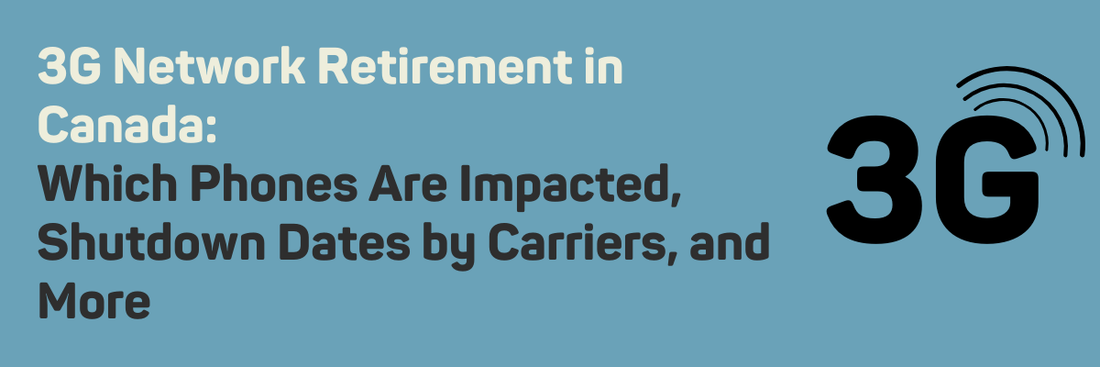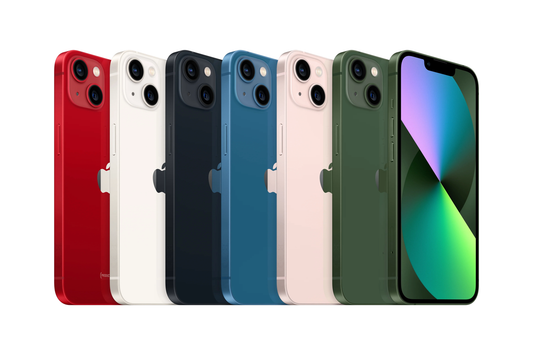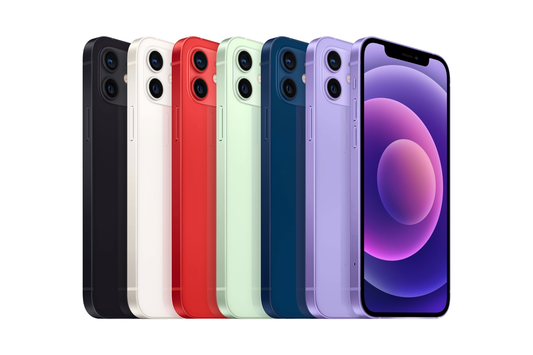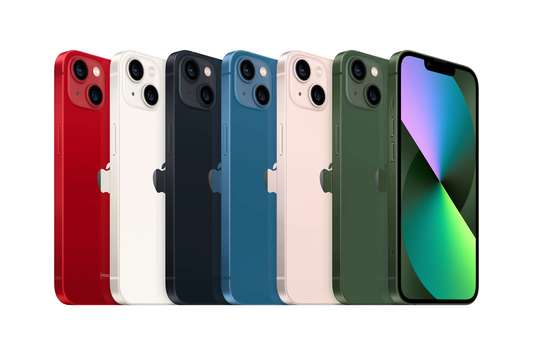It’s been with us for over 20 years, but soon it will be no more. This summer, Canada’s mobile carriers started phasing out the 3G network.
If you’re using an older iPhone, you might be wondering if your device will still work after the shutdown. Can you still use 3G in Canada? What iPhones still use 3G? And why are they getting rid of 3G, anyway?
Don’t worry: we have all the latest details on the end of 3G in Canada, which devices are affected, and what to do next if your phone doesn’t make the cut.
Canada’s 3G Network Retirement: What It Is and Why It’s Happening
As our needs for wireless service grow, providers upgrade their networks to improve speed and coverage. Most of us remember the launch of 5G in 2020, and before that, 4G/LTE in 2011. Each one offered better service and enabled more modern devices, while 3G networks continued to support older devices.
But all those networks are sharing a limited frequency spectrum. While older networks run alongside newer ones, they’re taking up valuable space in the mobile spectrum that could be repurposed for newer, more powerful networks. Plus, each additional network costs money to maintain. Today, less than 6% of mobile traffic in Canada is on 3G, while demand for 5G continues to rise.
That’s why Canada’s mobile carriers are retiring 3G service, beginning this year, to focus on 4G and 5G. Rural areas, Manitoba and Saskatchewan will generally see the end of 3G coverage first, with urban areas and other provinces to follow.
Which Carriers Are Phasing Out 3G and Their Shutdown Dates
The first network in Canada to completely shut down 3G is Rogers. Devices on Rogers, any of its subsidiaries, or independent carriers using Rogers infrastructure, lost access to 3G on August 7, 2025.
Most carriers are gradually withdrawing 3G beginning in 2025, with rural areas losing coverage first. Bell, Telus and their subsidiaries are ending 3G in Manitoba this year, and other carriers will stop service in Saskatchewan and Quebec. For many other customers, 3G is still running with no end date announced.
But note that mobile providers make agreements to use each other’s networks in certain areas, known as MVNOs (Mobile Virtual Network Operator). Even if your carrier officially has 3G in your province or city, you may see spotty or zero 3G coverage in areas where it uses another company’s network.
For full details of the known 3G shutdown dates in Canada, see the table below.
|
Shutdown Dates by Carrier Across Canada |
|||||
|
Rural Manitoba |
Urban Manitoba (Winnipeg, Brandon) |
Quebec/Ottawa |
Saskatchewan |
Rest of Canada |
|
|
Rogers, Fido, Chatr, MVNOs on Rogers network |
August 7, 2025 |
August 7, 2025 |
August 7, 2025 |
August 7, 2025 |
August 7, 2025 |
|
Bell, Virgin Mobile, Lucky Mobile, MVNOs on Bell network |
Dec 31 2025 |
Dec 31 2025 |
Not announced yet |
Not announced yet |
Not announced yet |
|
Telus, Koodo, Public Mobile, MVNOs on Telus network |
Dec 31 2025 |
March 31 2026 |
Not announced yet |
Not announced yet |
Not announced yet |
|
Videotron, Fizz, Freedom Mobile, MVNOs on Videotron network |
Not announced yet |
Not announced yet |
July 31 2025 |
Not announced yet |
Not announced yet |
|
Sasktel, Lum Mobile, MVNOs on Sasktel network |
August 7, 2025 |
August 7, 2025 |
August 7, 2025 |
Dec 31 2025 |
August 7, 2025 |
How the 3G Shutdown Affects Emergency Services (911 Calls)
Once 3G shuts down in your area, you won’t be able to use the 3G network to make phone calls, including 911 calls. Phones that can’t call over 4G/LTE (iPhone 6, 6 Plus and earlier) won’t be able to make phone calls at all, except for some customers on Rogers networks.
Since Rogers maintains limited 2G service in certain areas, 3G devices on its network may be able to fall back to 2G to make phone calls, including 911. That includes Rogers’ subsidiaries Fido and Chatr, and independent carriers using Rogers infrastructure, like SpeakOut, Good2Go and Red Wireless. But 2G coverage is limited and unreliable, and it may soon be phased out entirely.
If your device can’t make phone calls on 4G/LTE, we strongly recommend upgrading to a device that can reliably call 911, even if you’re on the Rogers network. You can find a wide selection of 4G/LTE compatible phones at Orchard!
Can I Keep My Plan After the 3G Shutdown?
Generally, yes. You can keep your plan after 3G shuts down. But certain things might change.
If your phone is not fully 4G/LTE ready:
- Some carriers, including Rogers, Telus and Bell, will charge you a $3/month fee.
- Rogers will charge a one-time $75 3G administrative fee.
- Your coverage area will likely be reduced.
- Other fees and changes may be in the works as the 3G shutdown continues.
If you decide to upgrade to a newer phone: You can switch phones without changing your plan, but you may be on a legacy plan that doesn’t support everything your newer phone will need to function. Plus, carriers reserve their best deals for new customers. It’s worth checking if switching carriers will get you a better deal for your new device.
If your phone is already 4G/LTE enabled: The 3G shutdown won’t affect your plan. You can continue to use your phone and get the same coverage as usual.
Which Phones Are Impacted by the 3G Shutdown?
The first phones to support 4G data couldn’t make calls over 4G, a feature known as Voice over LTE (VoLTE). Phones without VoLTE still use 3G for calls.
So how the 3G shutdown affects your phone depends on two factors: 4G support and VoLTE support. Let’s dive into the details.
iPhone 4S and earlier
If you’re still using an iPhone 4S (or even older), your phone doesn’t support 4G or VoLTE. You won’t be able to connect to the network at all in areas where 3G has been disabled, apart from the Rogers network’s limited 2G service.
That means no talk, text or data at all for these phones, unless you happen to have 2G coverage, which is slow and unreliable.
Note that mobile data networks don’t affect Wifi access. Your iPhone 4S or earlier can still connect to Wifi networks, like at home, work or an airport.
iPhone 5, 5S, 5C, 6 and 6 Plus
The iPhone 5 and 6 generations were the first to adopt 4G, but they don’t support VoLTE. If you have one of these phones, you can still go online, check your email, and send and receive texts to other iPhone users. But you won’t be able to make phone calls, or text with your friends who use Android.
As with the 4S and earlier, if you’re on Rogers or another carrier using its network, you may get some call and text service if 2G is still running in your area.
Your iPhone 6 Plus or earlier can still connect to Wifi networks, like at home, work or an airport. And if you have an iPhone 5S or later and your carrier supports it, you may be able to make phone calls over Wifi. Check with your carrier and phone settings.
iPhone 6S, 6S Plus, 7 and 7 Plus
These phones are fully compatible with 4G and VoLTE. You shouldn’t notice any changes in service when 3G shuts down.
But on the iPhone 6S and 7 generations, VoLTE is sometimes an optional setting. To make sure you’ll still be able to make calls after the end of 3G, check that the VoLTE toggle is switched on in Settings > Cellular > Cellular Data Options > Voice & Data. If you don’t see the VoLTE toggle, it’s likely enabled by default.
iPhone 8, X and newer
All iPhones from the iPhone 8, X and onward are fully 4G enabled. You can continue to use your phone as usual and you won’t need to change any settings.
And just for reference, 5G service (which offers faster dataspeeds) is available on the iPhone 12 and up.
What to Do if Your Device Is Affected
If you’re using a phone that doesn’t support 4G or VoLTE and your carrier is phasing out 3G in your area, your best option is to get a newer phone.
We don’t recommend changing carriers just to try to keep your 3G phone. All Canadian carriers are planning to shut down 3G soon, even those that haven’t announced a date yet. Many carriers also charge legacy network fees for customers without VoLTE support.
But you don’t have to buy an expensive brand-new iPhone or get roped into a pricey, restrictive contract just to stay connected. VoLTE is available on iPhones up to ten years old, costing as little as $200 for a certified refurbished device.
If your phone needs are minimal and you’re trying to cut costs, the lowest iPhone version we’d recommend is an iPhone 8. There are some apps it won’t run anymore, but it’s still a quality phone that can handle the basics. (And hey, if you’ve been using a 3G phone, the iPhone 8 will definitely run more apps than that.)
Want better app support? Look at the iPhone 11 or newer. You’ll still get great savings over a brand-new device, and your phone will run almost any app you need for at least a couple more years.
The Future of Mobile Networks in Canada (4G, LTE, 5G)
As we bid our fond farewell to 3G, it raises questions about the future of other networks in Canada. How long until we see the end of 4G/LTE? And is 6G coming soon?
4G and the rollout of 5G
The 4G/LTE standard, which arrived in Canada in 2011, isn’t going anywhere for now. 72% of mobile traffic in Canada uses 4G/LTE, and 5G coverage is largely limited to big cities and their suburbs. 4G is needed to fill coverage gaps when and where 5G isn’t available.
More importantly, the 5G network actually relies on 4G to function. Current 5G networks use 4G to manage things like signaling and call setup, moving to 5G for fast data transfer. And in most cases, phone calls take place over LTE, because 5G phone call support is still rolling out.
As 5G infrastructure advances, reliance on the 4G network will reduce, and 5G will one day allow standalone service. Even then, the high number of internet-enabled devices using 4G/LTE – not just smartphones, but internet-of-things gadgets, cars, sensors and even industrial machinery – means that 4G usage is unlikely to decline as quickly as 3G did.
When is 6G coming and how will it be different?
While it took nine years from the launch of 4G in 2011 to the initial phases of 5G in 2020, we may have to wait a little longer to see 6G. It’s currently in research and development, and adoption is expected in the early 2030s. As of now, the only country with a concrete plan for 6G is South Korea, which plans to launch 6G satellites by 2030.
That said, with everything 6G is planned to offer, it should be worth the wait. The worldwide standards bodies and engineers working on the new protocol are aiming for:
- Terabit speeds and microsecond latency
- A seamless global network with massively expanded bandwidth
- AI-driven infrastructure that can self-monitor, optimize and repair in real time.
These innovations are expected to enable the deployment of vast numbers of new devices, with applications like spatial computing, smart cities, advanced telemedicine and industrial automation. We can’t wait to see what that will look like in Canada.
Key Takeaways for Canadian Mobile Users
- Rogers has shut down its 3G network completely as of August 2025. Other carriers have already retired 3G in some areas, especially Manitoba and Quebec, and a full shutdown is expected over the next 12 to 18 months.
- If your iPhone is a 6 Plus or earlier, you won’t be able to make phone calls after your carrier retires 3G, including 911 calls. If it’s a 4S or earlier, you’ll also lose Internet access and data.
- The best way to maintain service is to upgrade to a newer phone that supports 4G/LTE. If you want to stick with an iPhone, these can be had for as little as $200.






